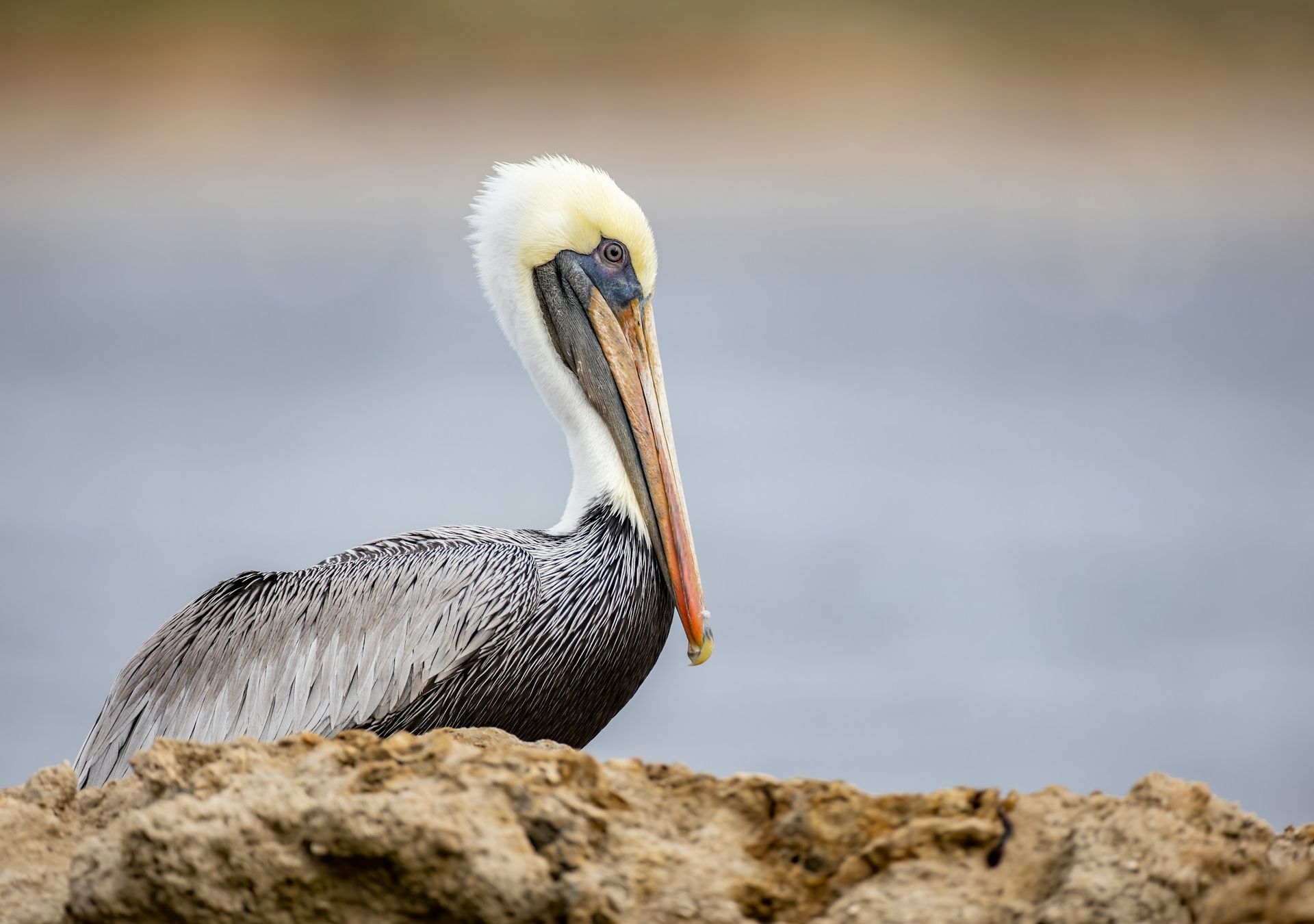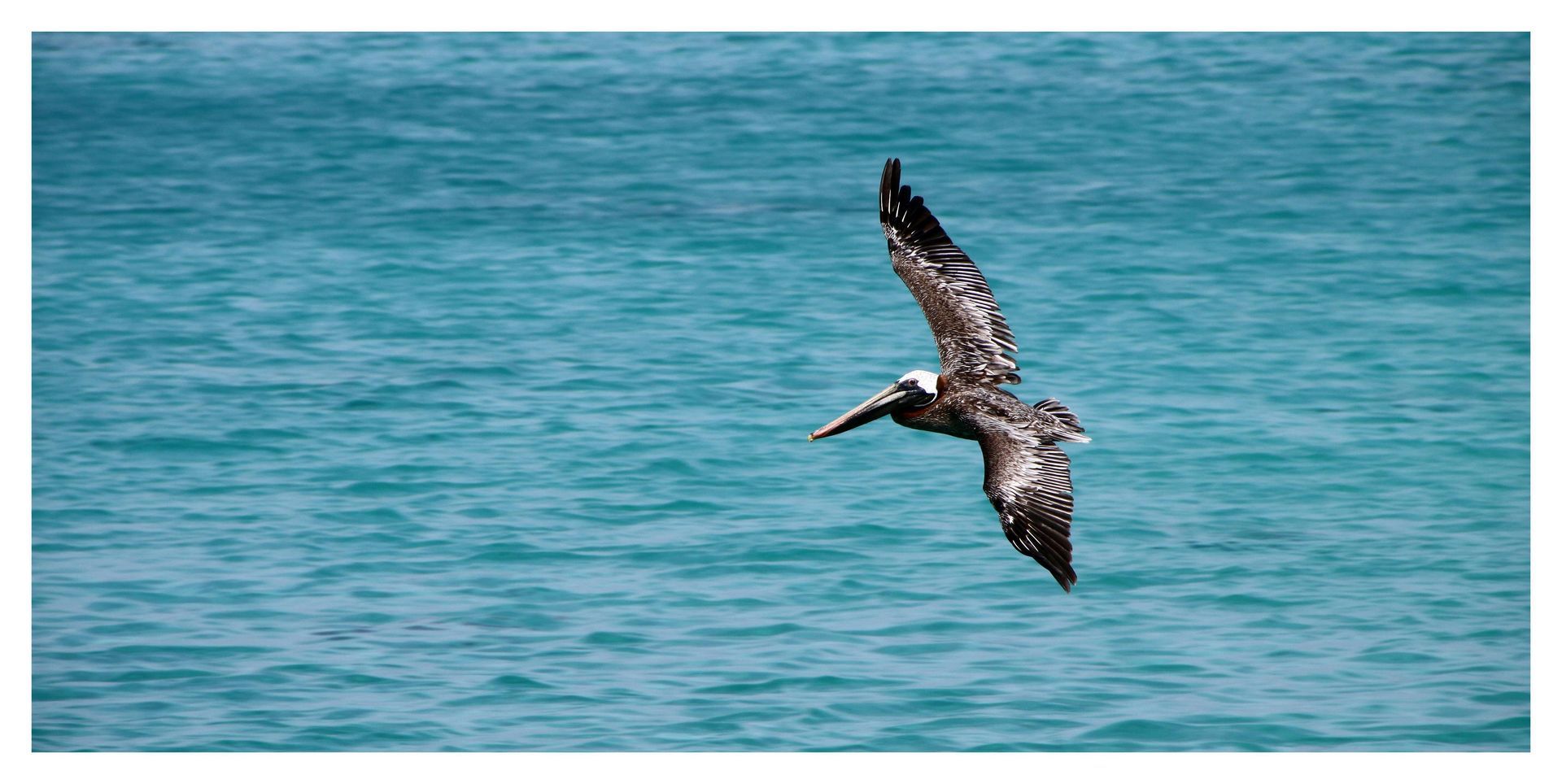Pelicans are large waterbirds known for their distinctive long beaks and large throat pouches used for catching fish. Found on every continent except Antarctica, pelicans inhabit coastal areas, lakes, and rivers, playing an important role in aquatic ecosystems by controlling fish populations.
Most pelicans measure between 4-6 feet in length with wingspans of up to 10 feet, making them among the largest flying birds. Their plumage is typically white, brown, or gray, depending on the species. Common North American species include the Brown Pelican and the American White Pelican.
Pelicans are social birds, often foraging and nesting in large colonies. They primarily feed on fish, scooping them up in their expandable throat pouches. Brown Pelicans are known for their dramatic plunge-diving behavior, while American White Pelicans work together to herd fish into shallow water. During the breeding season, pelicans build nests on the ground or in trees near water, and both parents share incubation duties.
Natural predators include gulls, raccoons, and larger birds of prey, but human-related threats such as habitat loss, pollution, and entanglement in fishing gear pose significant risks. Despite these challenges, pelican populations have shown resilience in many regions.

For your safety and the well-being of wildlife, please observe animals from a distance and avoid touching or disturbing them. If you encounter an animal that appears injured or in distress, contact a licensed wildlife rescue organization for guidance before intervening.
Found An Animal? Not sure how to help a wild animal in need? Learn when to step in, who to call, and how to help safely.
Did You Know?
- Pelicans can hold up to three gallons of water in their throat pouches.
- American White Pelicans have one of the longest migrations of any North American bird, traveling thousands of miles.
- Pelicans have air sacs beneath their skin that help them stay buoyant in water.
- The Brown Pelican was once endangered due to DDT contamination but has made a remarkable recovery.
- Pelicans can live up to 25 years in the wild.
- During the breeding season, pelicans develop brightly colored facial skin.
- Pelican chicks can recognize their parents by their calls.
- Pelicans work together when hunting, using teamwork to corral fish.
Problems Faced In The Wild
- Habitat Loss: Coastal development reduces nesting and foraging areas.
- Pollution: Oil spills and chemical contaminants harm pelicans and reduce prey availability.
- Fishing Gear Entanglement: Discarded fishing lines, hooks, and nets pose serious risks.
- Climate Change: Rising sea levels and altered weather patterns affect food availability and breeding success.
- Human Disturbance: Recreational activities can disrupt nesting colonies and cause stress.
- Predation: Eggs and chicks are vulnerable to predators such as raccoons and gulls.
Tips For Cohabitation
- Support Clean Waterways: Reduce plastic waste and participate in coastal cleanups.
- Dispose of Fishing Gear Properly: Prevent entanglement by keeping fishing areas clean.
- Respect Nesting Sites: Avoid disturbing pelican colonies during the breeding season.
- Monitor Water Quality: Support efforts to reduce pollution in aquatic habitats.
- Educate the Community: Share the importance of pelicans in maintaining healthy ecosystems.



